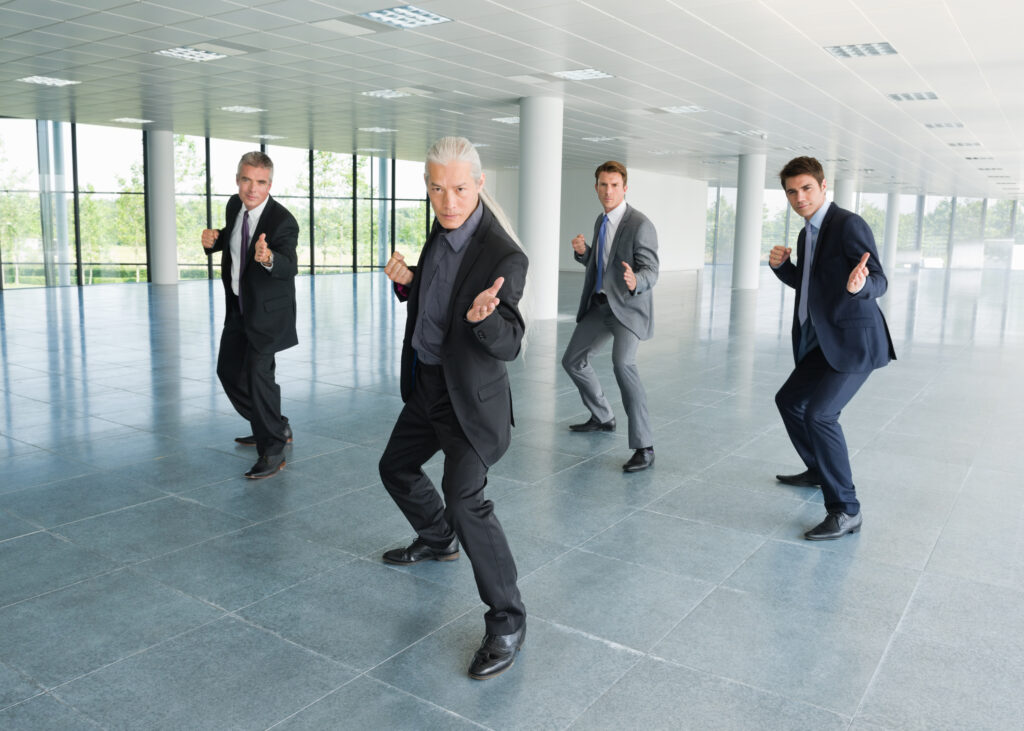Tai Chi Approach to Litigation
Tai Chi Litigation Style
By Russell Adler

Several years ago I was working for a mid-size litigation firm as a Coach to approximately ten young associates, with zero to three years of experience, at any given time. Since they hired some new law school grads every year, there was always a fresh supply of newbies. The supervising lawyers did a good job training them to be effective in court and crafting motions, pleadings and arguments, I focused on improving their mindset and behavior by taming their egos, stressing the need for objectivity, open mindedness and other core attitudes, and curbing impulsivity through mindfulness.
During my 27 years as a civil trial lawyer before becoming a mindset and performance coach, I became interested in Yang-Style Tai Chi and began taking lessons on weekends on Hollywood Beach with a well known Master known as Kung Fu Lou. Unlike the fighting application of many external martial arts (where students are trained to meet force with force), Tai Chi is an internal martial art- where you receive and redirect your opponent’s force and use it against them, while using very little of your own.
When most people think of Tai Chi, they envision groups of elderly people doing slow meditative movements in large groups in a park. However, each one of those movements (when sped up) can be used in a physical conflict- and if done properly can inflicting severe damage to one’s opponent using their own force; hence the saying that using Tai Chi, the old can defeat the young and the weak can defeat the strong.
One of the pillars of Tai Chi is mindfulness- which means not only paying attention to your surroundings, but being keenly aware of what’s going on- so you can immediately react to situations as they’re unfolding, remain calm, get out of the way, and redirect your adversary’s energy.
After studying Tai Chi for several months and learning how graceful and effective it can be when done correctly, I realized that it would probably work well in adversary system of litigation, where the opposing lawyers are paid to constantly attack and ultimately defeat you, What better way to deal with this than with Tai Chi?
Too many lawyers were, and still are, stressed out, up tight, and looking for their next fight or argument. Some put on a “game face” to appear tough and prove themselves to their like-minded colleagues or bosses. Just as punches and kicks can be redirected using an attacker’s own energy, Tai Chi principles are equally effective in verbal confrontations and attacks from adversary lawyers- often times by simply responding with kindness or humor and a smile in a context where it’s totally unexpected.
Of course this requires resisting our natural impulse to meet forceful words with forceful words, and to fight fire with fire. Tai Chi tells us to fight fire with water, not fire, and to avoid conflict whenever possible. Responding to conflict this way in the heat of a moment requires calmness, discipline and focus, as opposed to adrenaline-fueled impulsivity. In a litigation context, the results and benefits of Tai Chi can be immediate and lasting- and can pay large dividends.
To that end, I once advised a young associate who had anxiety about an upcoming hearing against an obnoxious (and highly experienced) older defense attorney whose verbal assaults had overwhelmed the young associate. My suggestion was unorthodox but effective- I suggested that after the hearing, the young associate should offer to buy his opponent a cup of coffee after the hearing. The next day, the associate happily reported that opposing counsel was shocked by the offer but accepted it- and after having coffee together they got along famously and ultimately settled their case for a large amount.
The Tai Chi litigation style has proven to be so effective that I’ve incorporated it into my mindset and performance coaching for lawyers. It’s had a meaningful and lasting impact on many I have worked with, and changed their mindset and behavior for the better.
updated 7/19/24
